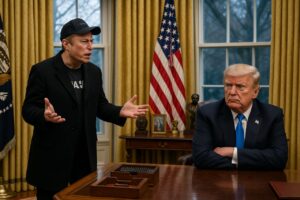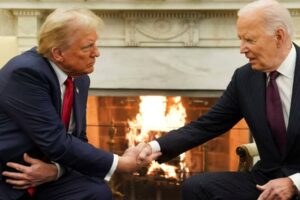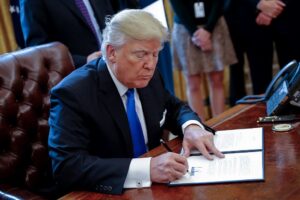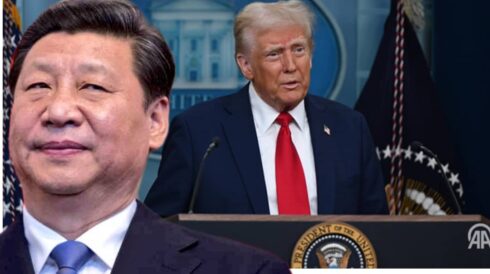China has officially retaliated against the latest round of tariffs imposed by the Trump administration, announcing a sweeping 34% additional tax on all US goods entering the country. The Chinese Finance Ministry revealed these “resolute countermeasures” in a statement, escalating the ongoing trade war between the two economic superpowers.
In a move that will significantly impact American companies looking to access the lucrative Chinese market, Beijing has also implemented export controls on seven rare earth elements critical for consumer electronics production. The new tariffs, set to take effect from April 10, follow a previous round of Chinese levies of 10% to 15% on American agricultural products. These measures come in direct response to the combined 54% hike in tariffs imposed on Chinese goods by Washington earlier this week.
China Announces Further Restrictions on US Entities
In addition to the tariff increase, China has unveiled new restrictions targeting American companies, citing national security concerns and the Taiwan issue. The latest measures include adding 16 US firms to its “export control” list, effectively blocking them from acquiring dual-use goods, software, and technology that can serve both civilian and military functions.
Furthermore, Beijing has designated 11 foreign companies as “unreliable entities,” enabling it to take punitive actions against firms allegedly engaged in “military and technical cooperation with Taiwan.” As part of this aggressive stance, China has also suspended the import qualifications of six US companies, citing food safety concerns. These restrictions represent a significant escalation in trade tensions between the two countries, affecting multiple industries beyond just tariffs.
Why Did China Choose a 34% Tariff?
The 34% tariff imposed by China appears to be a direct response to the latest US tariff increase of the same percentage. President Trump’s administration had gradually raised tariffs on Chinese imports since his return to the White House in January, first imposing a 20% duty before increasing it by another 34% earlier this week.
While the total tariff burden on Chinese goods has reached 54%, it is important to note that this figure includes pre-existing tariffs. The latest tariff war follows Washington’s broader strategy of imposing reciprocal duties on several countries, with China being one of the hardest-hit nations. By mirroring Trump’s latest tariff rate, China aims to send a strong message of resistance while maintaining a sense of proportionality in its response.
Global Markets Plunge Amid Escalating Trade War
The global financial markets have reacted sharply to China’s announcement, with major stock indices experiencing significant declines. European markets, including those in the UK, Germany, and France, have all dropped by more than 3% following the news. Earlier in the day, Asian markets had already slumped in response to fears of an intensified trade dispute.
The latest tariffs from President Trump on Wednesday had triggered a massive sell-off in US markets, marking their worst trading day since the COVID-19 pandemic began in 2020. Investors are increasingly worried that rising tariffs will lead to higher consumer prices and slow economic growth not just in the US, but globally. Economists warn that a prolonged trade war could disrupt supply chains and further strain the already fragile global economic recovery.
China’s Justification for the Additional Tariffs
In defending its latest move, China’s finance ministry has stated that the US tariffs on Chinese goods violate international trade norms. Beijing argues that these measures are a necessary counteraction to protect its economic interests against what it perceives as an unfair trade policy from Washington.
President Trump’s tariff strategy has placed China among the most heavily targeted nations, significantly disrupting trade flows between the two countries. With no immediate signs of de-escalation, analysts predict that the tit-for-tat trade war could continue to spiral, leading to further retaliatory measures on both sides. The coming weeks will be critical in determining whether diplomatic negotiations can prevent the situation from worsening into a full-blown economic conflict.














